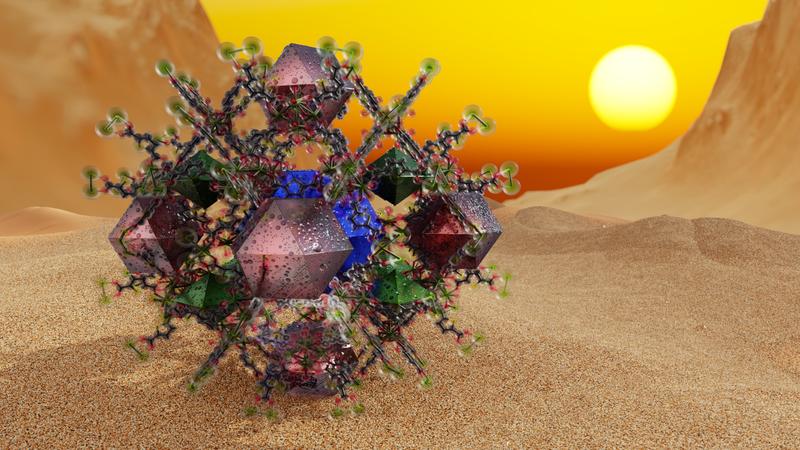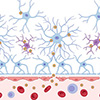Jan 05, 2024 (Nanowerk News) Researchers from the Helmholtz-Zentrum Dresden-Rossendorf (HZDR) and Dresden University of Technology (TUD) have unraveled the water adsorption mechanism in certain microporous materials – so-called hierarchical metal-organic frameworks (MOFs) – while probing them on the atomic scale. Discovered only about 25 years ago, their special properties...
Nanostructured flat lens uses machine learning to ‘see’ more clearly, while using less power
Jan 05, 2024 (Nanowerk News) A front-end lens, or meta-imager (see below), created at Vanderbilt University can potentially replace traditional imaging optics in machine-vision applications, producing images at higher speed and using less power. The nanostructuring of lens material into a meta-imager filter reduces the typically thick optical lens and...
Inhalable nanosensors could enable early lung cancer detection
Jan 05, 2024 (Nanowerk News) Using a new technology developed at MIT, diagnosing lung cancer could become as easy as inhaling nanoparticle sensors and then taking a urine test that reveals whether a tumor is present. Key Takeaways This non-invasive approach may serve as an alternative or supplement to traditional...
Mysterious missing component in the clouds of Venus revealed
Jan 05, 2024 (Nanowerk News) What are the clouds of Venus made of? Scientists know it’s mainly made of sulfuric acid droplets, with some water, chlorine, and iron. Their concentrations vary with height in the thick and hostile Venusian atmosphere. But until now they have been unable to identify the...
Microscopic ion trackers herald new era for organelle communication research
Jan 05, 2024 (Nanowerk Spotlight) Scientists have long sought to decode the complex communication between cellular organelles that regulates virtually all aspects of human health and disease. Mitochondria and lysosomes interact through transient “contact sites”, exchanging vital ions and molecules that control processes from aging to cancer. Yet the nanoscale...
Using berry phase monopole engineering for high-temperature spintronic devices
Jan 05, 2024 (Nanowerk News) Spintronic devices are electronic devices that utilize the spin of electrons (an intrinsic form of angular momentum possessed by the electron) to achieve high-speed processing and low-cost data storage. In this regard, spin-transfer torque is a key phenomenon that enables ultrafast and low-power spintronic devices....
Medically relevant nanoparticles move faster in cells than expected
Jan 05, 2024 (Nanowerk News) An experiment led by a team of DESY and Universität Hamburg scientists has discovered that gold nanoparticles can move through liquid biological matter faster than expected when coated by the polymer polyethylene glycol (PEG). The team’s data, which were acquired using X-ray photon correlation spectroscopy,...
Harnessing sensors, smart devices, and AI could transform agriculture
Jan 05, 2024 (Nanowerk News) Biosensing engineer Azahar Ali, assistant professor of animal sciences and biological systems engineering at Virginia Tech, is bracing for the arrival of a fourth agricultural revolution. It’s an era predicted to tap into the transformative potential of the connective technologies that have arisen in the...
Nanoparticle transport across the blood brain barrier increases with Alzheimer’s and age
Jan 05, 2024 (Nanowerk News) Neurodegenerative disorders such as Alzheimer’s disease affect more than 270 million people worldwide. AD is the leading cause of dementia, resulting in memory loss due to atrophy of neurons in the hippocampus, which is the part of the brain that regulates learning and memory. Nanoparticles...
Developments in dual-atom catalysts make renewable energy sources more efficient
Jan 04, 2024 (Nanowerk News) The rapidly developing field of green energy constantly seeks improvements, and recent advances in dual-atom catalysts hold the potential to revolutionize energy conversion technologies. Key Takeaways Recent advancements in dual-atom catalysts show significant potential in improving energy conversion technologies, particularly in water-splitting systems. These catalysts...










